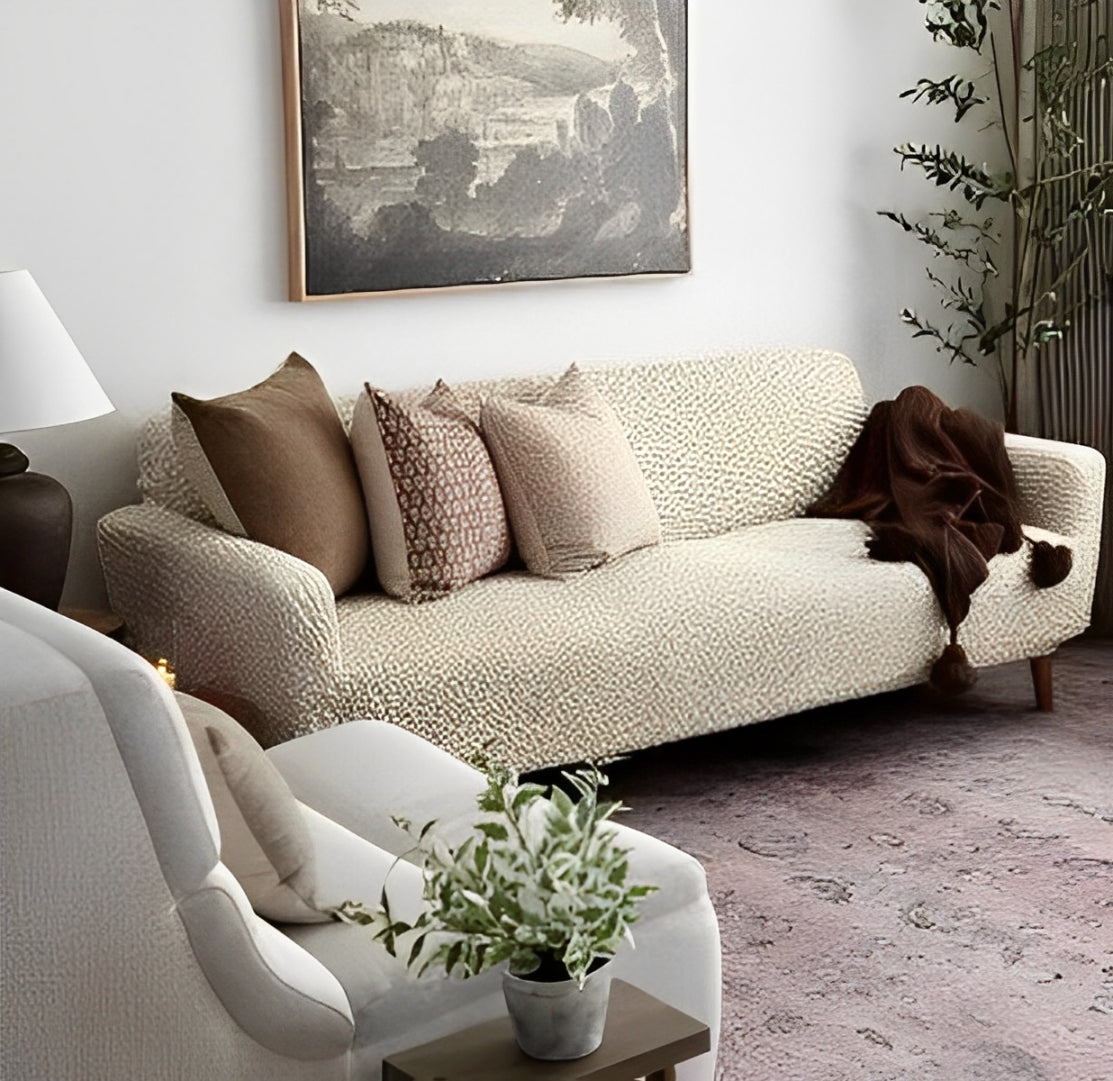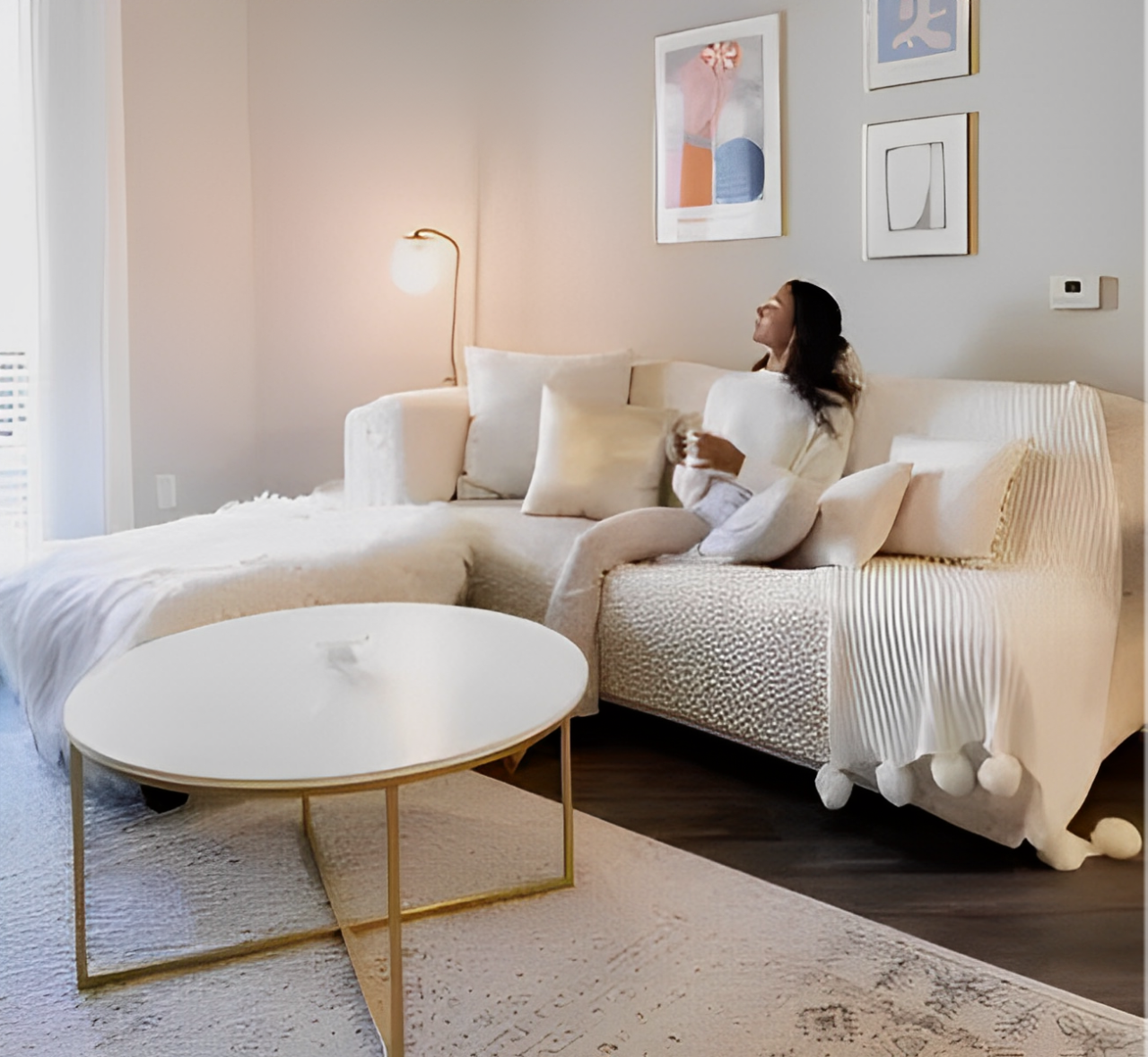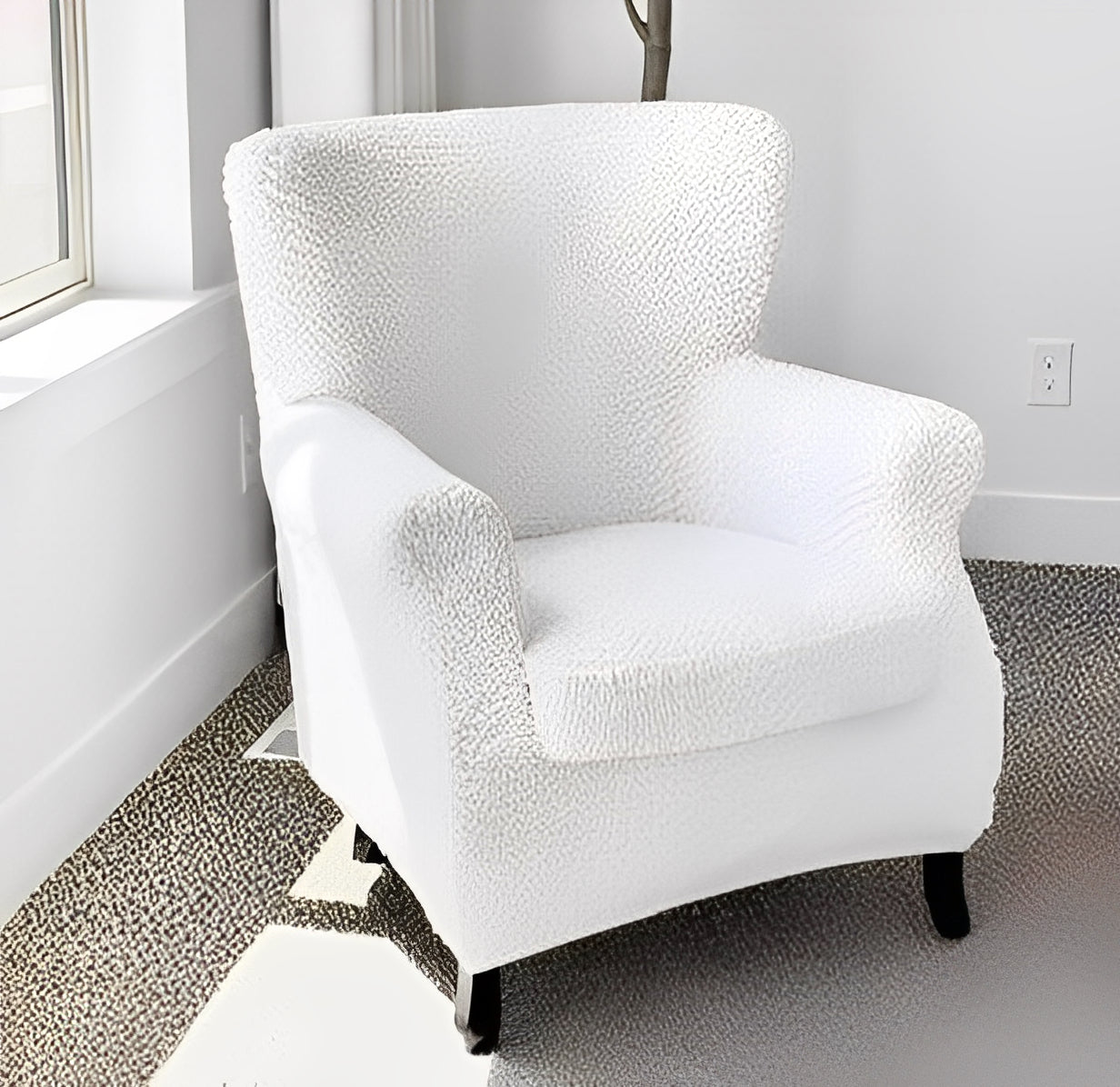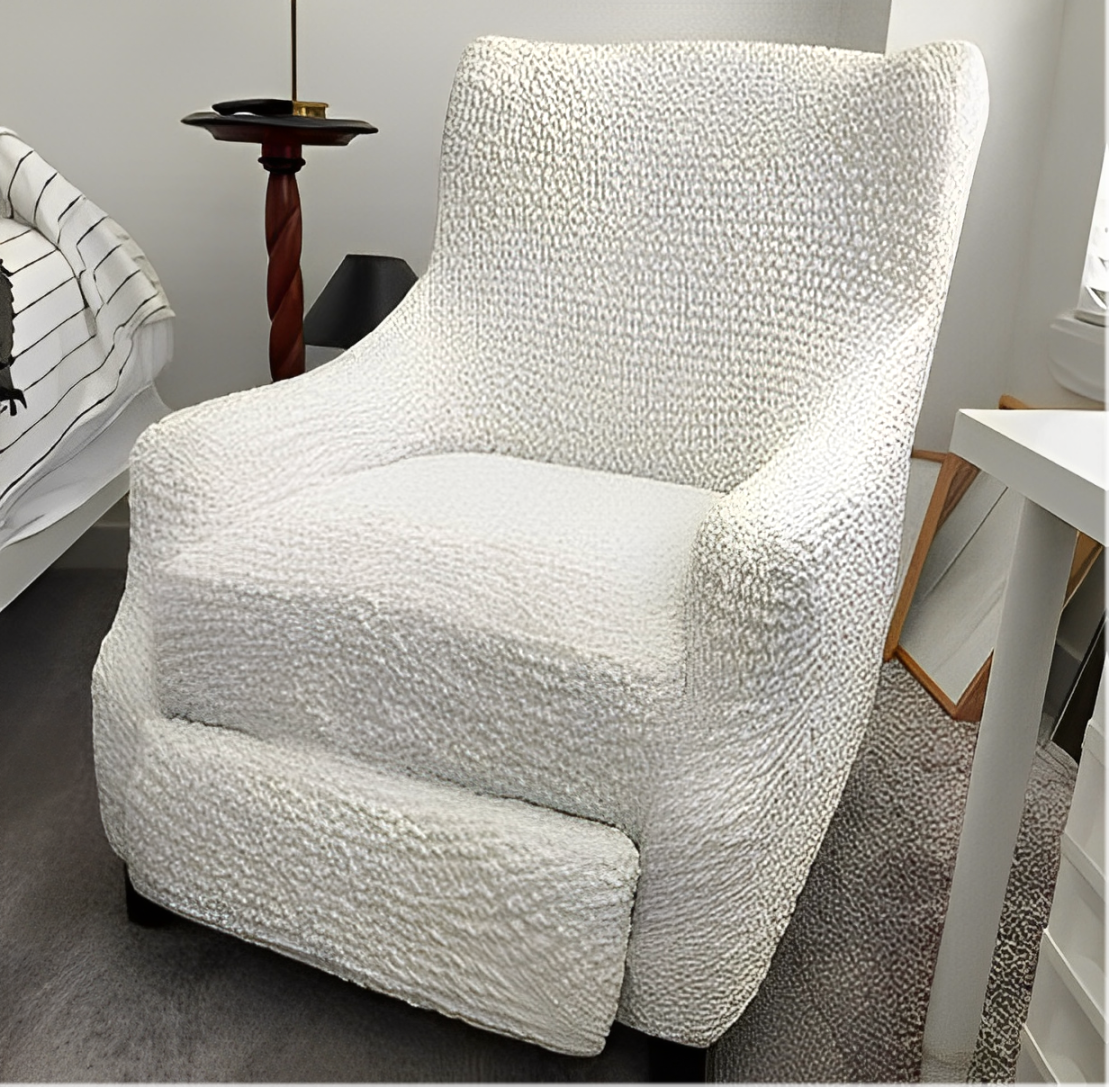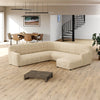While neutrals have been popular in recent years, there’s a growing trend toward the use of bold colors for living rooms. However, since too much color can be overpowering, it’s important to use them correctly.
In this article, we will explore how to mix bold colors in interior design, including choosing a color scheme, incorporating accent colors, and experimenting with different hues and textures, so that everyone regardless of their design skills can bring color to their homes in a beautiful way!
Stick to the 60-30-10 Rule
 The 60-30-10 rule is a universally recognized guideline in interior design for creating a balanced color scheme. This rule suggests that 60% of a room’s color should be the dominant color, 30% a secondary color, and 10% an accent color.
The 60-30-10 rule is a universally recognized guideline in interior design for creating a balanced color scheme. This rule suggests that 60% of a room’s color should be the dominant color, 30% a secondary color, and 10% an accent color.
When it comes to mixing bold colors in your home decor, this rule can prove to be a helpful tool. To apply this rule, start by choosing a dominant color. For example, you might choose grey for the walls of a living room.
Next, choose a secondary color that will make up 30% of your room’s decor. This color should be complementary to the dominant color, but not as strong. For example, if the color of your walls is grey, you could opt for blue or teal for the upholstery.
The remaining 10% should be the boldest of the three. What is a bold color? It’s a bright and vivid hue that is typically found on the other end of the spectrum from neutral or muted colors and catches the eye. In the interior, there can be a bright pop of color, such as a white vase, a light grey rug, or sky blue pillows — whatever suits you best!
Use Color Wheel for Guidance
 It can be quite difficult to choose dominant, complementary, and accent colors if you don’t know exactly what they are. However, you don’t need to take an interior design course to learn the basics of colors. You can use a color wheel instead.
It can be quite difficult to choose dominant, complementary, and accent colors if you don’t know exactly what they are. However, you don’t need to take an interior design course to learn the basics of colors. You can use a color wheel instead.
First things first, choose a dominant color that complements your existing furniture and decor. Then select complementary colors. Complementary colors are typically located opposite each other on the color wheel. For example, if your dominant color is green, its complementary color is red.
When it comes to accents, these colors sit next to the dominant or complementary colors, which means you have a wide range of shades and hues to complement your interior design.
Go With Adjacent Colors
 A surefire way to create a space that looks harmonious and visually appealing is to use adjacent colors. When paired together, these colors create a subtle and sophisticated color combination that is pleasing to the eye.
A surefire way to create a space that looks harmonious and visually appealing is to use adjacent colors. When paired together, these colors create a subtle and sophisticated color combination that is pleasing to the eye.
To give you an idea, if you have a purple chair, consider complementing it with an accent piece such as a navy blue or coral pink pillow. Both colors are adjacent to purple and can help create an interesting look.
Go With Complementary Colors
 If you choose to stick with complementary colors, you won’t go wrong either. Complementary colors in the interior create a strong contrast that can add depth and energy to a room. The key is to use bold colors in moderation, otherwise, you may end up with a chaotic look instead of a pleasant-to-the-eye setting.
If you choose to stick with complementary colors, you won’t go wrong either. Complementary colors in the interior create a strong contrast that can add depth and energy to a room. The key is to use bold colors in moderation, otherwise, you may end up with a chaotic look instead of a pleasant-to-the-eye setting.
For example, if the dominant color in your room is cherry, you can pair it with a cozy emerald green furniture cover and some artwork in the matching shade. Want to add even more visual interest to your space? In that case, consider using patterns that incorporate your dominant color and the complementary color. This will help create a cohesive and balanced look.
Monochrome It Up!
 Do you have bold bedroom colors that you’d like to break down a bit? If so, monochrome is the technique you need. The beauty of monochromatic decor is that it’s very easy to accomplish. Rather than pairing two or more colors together, all you need is to style your room around a few shades of your favorite color.
Do you have bold bedroom colors that you’d like to break down a bit? If so, monochrome is the technique you need. The beauty of monochromatic decor is that it’s very easy to accomplish. Rather than pairing two or more colors together, all you need is to style your room around a few shades of your favorite color.
If you have applied a bold color on the walls, bring in medium tones on your furniture. For example, if your walls are green, you can layer your bedroom with lighter shades through sage green throw pillows. For bold accents, weave in some decor items in white. Photo frames, vases, shelves, statutes, light fixtures, all of these things work.
Monochromatic designs look very modern and impressive. However, there’s always a risk that they might come across as too flat. To not let that happen, just incorporate different textures into the room for added visual interest.
Balance the Temperature
 When decorating your home, you should also not forget about the color temperature. All colors on a color wheel belong to either a cold or warm color palette. For example, blues, purples, greens, and greys are cool colors, while reds, oranges, and yellows are warm colors.
When decorating your home, you should also not forget about the color temperature. All colors on a color wheel belong to either a cold or warm color palette. For example, blues, purples, greens, and greys are cool colors, while reds, oranges, and yellows are warm colors.
Ideally, you want to mix both tones in your interior to create a comfortable and visually-appealing space. By mixing the two, you’ll prevent your home from coming across as too chilly or too overwhelming and achieve a balanced look that is comfortable, fresh, and pleasant to be in.
To apply this rule, here are some tips. If your room has a prevalent cool color, you can use warm colors as accents, and vice versa. Alternatively, you can transform the space through lighting that can help create the desired temperature balance.
Don't Forget About Harmony
 Finally, whatever way you decide to go, harmony should be at the top of your mind. So, it can be a good idea to first test your colors before completely transforming your space. Start small by painting a small area or using swatches. This will help you see how the color looks in different lighting conditions and avoid making a costly mistake.
Finally, whatever way you decide to go, harmony should be at the top of your mind. So, it can be a good idea to first test your colors before completely transforming your space. Start small by painting a small area or using swatches. This will help you see how the color looks in different lighting conditions and avoid making a costly mistake.
Think about what design element you want to be a focal point. By identifying the focal point, it will be easier to anchor the room and create a sense of balance and harmony in your space.
Of course, you should also be ready for experiments. Mix textures and patterns to create interest and depth in your design. If you notice that the space looks a bit cluttered, introduce neutrals to balance out your room.
Mixing bold colors in your home interior can be a challenging task, but with the right approach, it can be a fantastic way to create a vibrant and unique space. Follow tips outlined in this article, and you’ll create a stunning and inviting interior that you’ll love for years to come!
MORE INTERIOR DESIGN IDEAS & INSIGHTS:
